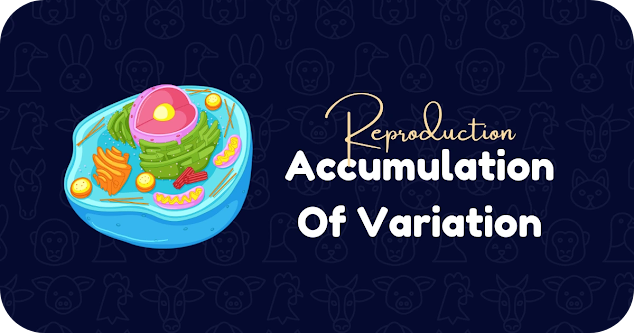Accumulation of Variations During Reproduction - An Overview
Before understanding variation in detail, it is important to understand and know a few key terms. Let us have a look at them.
- Heredity: It is the transmission of genes from parents to offspring. It goes through separation and then fusion during stages of fertilization resulting in the formation of a new genesis of an individual, similar to that of its parent genome but has slight variations since it involves genes from both the parents.
- Evolution: It is a process in which gradual change is brought about in a biological population over the years due to changes in inheritable characteristics. These changes are usually physical changes.
- Inheritance: It is a process of acquiring genes by an offspring cell from its parent cell as a result of the transmission of genes.
- Variation: Whenever there is a transmission of genes from parents to offspring, there are slight differences between the cells. This could either be because of their genetic differences or because of the environmental effect on those genetic characteristics which cause the change.
Accumulation Of Variation
Why do fruits, for example, bananas look alike? This is because most of the fruits reproduce asexually, which typically involves only one parent. During asexual reproduction, the genetic makeup of only a single parent is transferred, which is why we do not see much of variation in their physical characteristics. However, we do see slight changes produced because of minor inaccuracies while copying DNA.
But in sexual reproduction, we see a huge variety amongst organisms because it involves the fusion of genes from both parents. This fusion gives rise to innumerable combinations of the very same gene set resulting in organisms looking different from their parent. The variation that is accumulated, is passed on over the years, which results in noticeable changes from the past few generations. The basis for evolutionary processes is, however, dependent on the selection of variants by environmental factors.
Why Is It Important To Have Variations?
Variations amongst organisms are a very complex process and involve a careful examination of these processes to understand them better. Following are a few of the reasons why it is important to show differences.
- It makes up for the raw material for evolution
- Hybrids can be produced: Different variations of animals and plants can be produced
- Lays the foundation for heredity amongst organisms
- Helps organisms to adapt to various physical conditions
- Helps in the selection of different variants which are suited to different environmental conditions
- Variations give rise to organisms being visibly different from each other
Long-term consequences of Accumulation of variation
Variation, as we have seen, is significant in the field of science. It results in the formation of new species that can adapt far more efficiently than their predecessors. It also helps us understand the science behind this phenomenon on an intricate level, enabling a deeper insight into unanswered questions.
